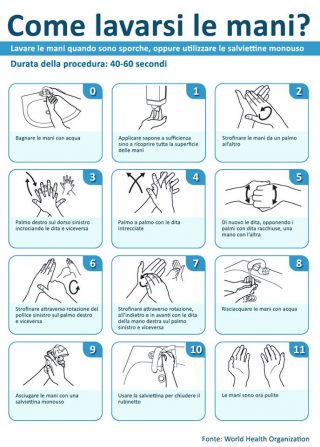CARE-RELATED INFECTIONS: HOW TO PREVENT THEM?
2024-03-15 BacteriaEco Silver PaperHygiene
Care-related infections (ICAs) are acquired infections that constitute the most frequent and serious complication of healthcare and can occur in any care setting. ICAs include infections transmitted externally (exogenous), from person to person or via caregivers and the environment, and infections caused by bacteria within the body (endogenous).
The causes are manifold:
- the progressive adoption of new health technologies, with the prolonged use of invasive medical devices and complex surgical interventions, which, while improving therapeutic possibilities and the outcome of the disease, may favour the entry of microorganisms into normally sterile body sites;
- the weakening of the body’s defence system (immunosuppression) or serious concomitant diseases;
- the poor application of environmental hygiene and infection prevention and control measures in the care setting;
- the emergence of antibiotic-resistant bacterial strains, mainly due to the incorrect or excessive use of these drugs, which further complicates the course of many ICAs.
These infections have a significant clinical and economic impact because they cause a prolonged length of stay, long-term disability and increased resistance of microorganisms to antibiotics. All these factors lead to a significant increase in the expenses incurred by the healthcare system, patients and their respective families. The costs are estimated at approximately EUR 7 billion, including direct costs only. Not all ICAs can be prevented, but it is currently estimated that more than 50% can be. Most ICAs affect the urinary tract, the respiratory system, surgical wounds, systemic infections (sepsis, bacteremia). The most frequent are urinary infections, which alone account for 35-40% of all hospital infections. The people most exposed to ICAs are patients; however, staff and visitors are also at risk of contracting them. These infections are transmitted, depending on the micro-organism, through direct, person-to-person or airborne contact and indirectly by contaminated objects.
Prevention and control of ICAs in all care settings are key to reducing the impact of these infections and to reducing the spread of antibiotic-resistant microorganisms. One of the crucial points for combating ICAs is the definition and implementation of good care practices and other measures, according to an integrated programme that must be adapted to each care setting.

The key measure to prevent these infections is certainly hand washing, but hand drying should by no means be underestimated! Drying is an equally important process and can be done through paper. Paper, being made of natural cellulose fibres, can be loaded with pathogens during its production, transport and storage. As a result, an important community of bacteria can be isolated on unused paper towels and can be transferred to people after hand washing. So you who are reading this article will ask yourself, how is it possible not to have your hands constantly contaminated by microorganisms? Don’t worry, there is a solution and it is called ECO SILVER PAPER®!
Our technology, studied together with the University of Ferrara, thanks to stabilised silver ions, guarantees resilient antibacterial activity for up to 2 years after production. This is a unique feature on the market that allows us to offer an innovative product with hi-tech characteristics: ANTIBACTERIAL certified. The microbial load on Eco Silver Paper® treated paper is significantly lower than on untreated paper. Over time, bacteria present in ordinary paper tend to proliferate considerably, while articles treated with our Eco Silver Paper® active ingredient are defended and remain 100% hygienic. Each production batch of articles treated with Eco Silver Paper® is tested and verified for antibacterial activity on the paper, and the paper is also dermatologically tested. This technology can become an important tool for the prevention of these infections, capable of significantly reducing the spread of microorganisms in healthcare facilities. AND WILL YOU BE WITH US?





LATEST COMMENTS